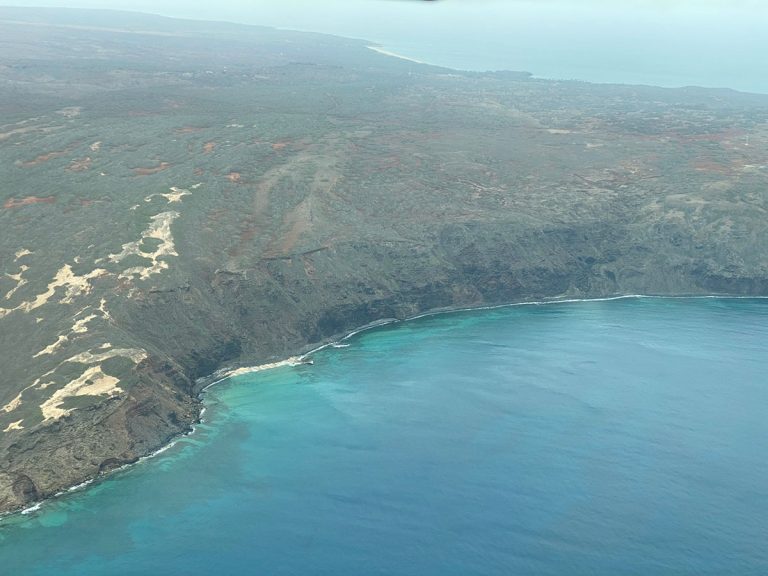We took off from Honolulu, and our aircraft headed for the Hawaiian island of Molokai. The catchy beat from the television series Hawaii 5-O drummed in my head: duntadundun-dun dun-duntatdundundun. The clear blue ocean was mesmerizing, and the coast of the small island we planned to visit came into view. The rocky outcrops and formidable cliffs were awe-inspiring, but the lack of human presence was noticeable. The diminutive land mass wasn’t your typical tourist island.
It didn’t take long to settle in and plan for an afternoon hunt. My guide put his truck into four-wheel drive to maneuver the rugged trail with deep-cut washouts and large rocks. It had recently rained and turned the trail into a muddy mess. We bounced, slid, and spun to the top of a ridge where the trail entered the dense forest. We parked, and when we got out, my guide smiled and pointed to a hollow in the tree about 15 yards off the ground. Hundreds of honeybees swarmed the tree, with their liquid gold running down the trunk. Honey symbolizes abundance and wisdom and was a good hazard to avoid but an excellent omen for a productive afternoon.
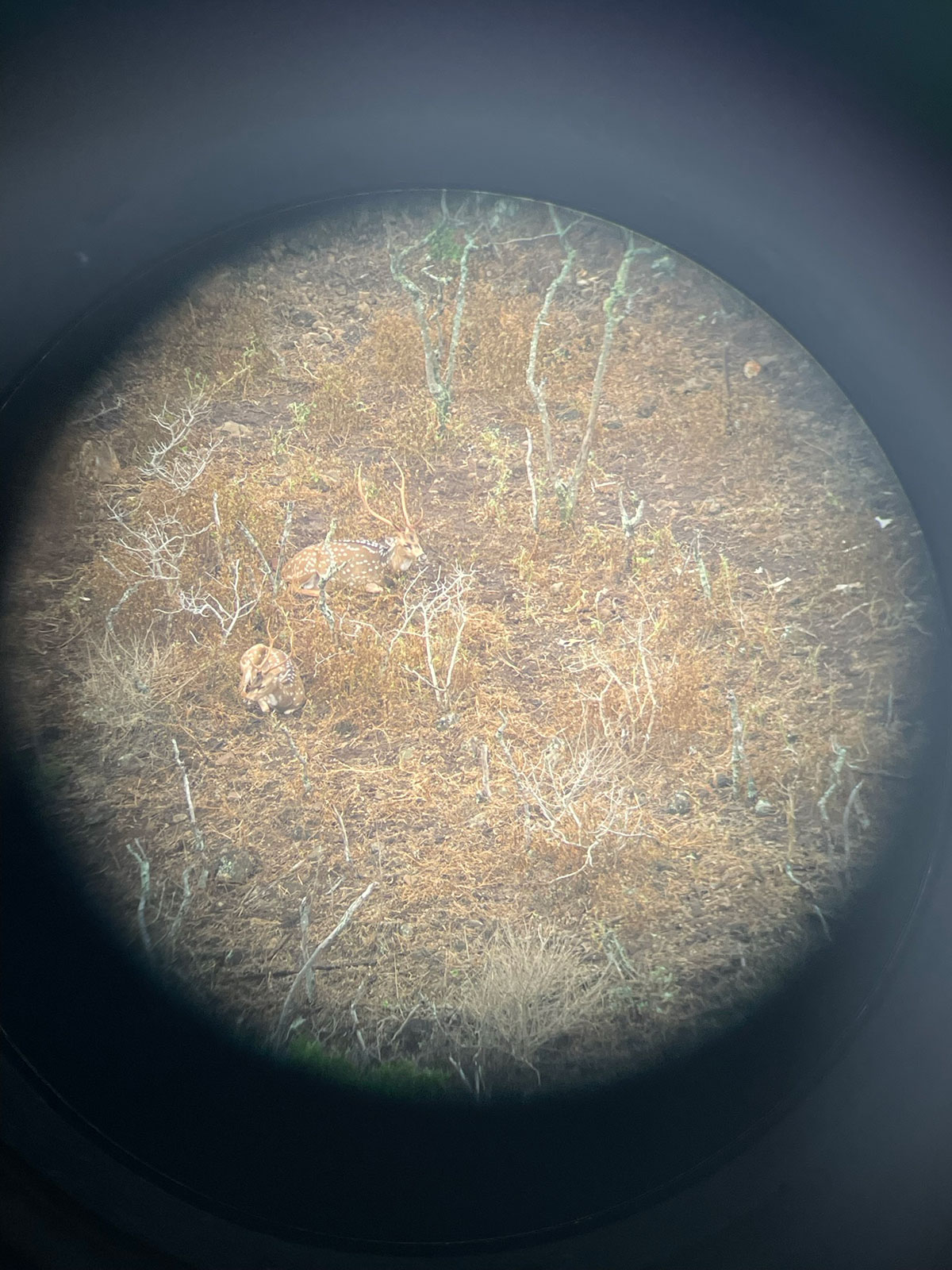
On the Hawaiian Island of Molokai, axis deer outnumber people—by a lot. We scurried down trails where the shrubs and ground cover tore clothes, and the volcanic soil turned everything reddish brown. The cover soon changed to rugged rocky hills and deep valleys. Red dirt, rocks, and brush went on as far as the eye could see. The afternoon heat was still intense, and breaking a sweat didn’t take much activity. At first glance, the terrain looked desolate and unassuming until we put our optics to use.
We picked large rocks to lean against, kicked out a nest to sit in, ensured there were no pokey spins, and glued our eyes to our Leupold binoculars. The tan and white axis deer blend exceptionally well with the terrain, making it easy to look right through them. Being afternoon, we knew the deer would be deep in the draws, where the shade would have kept them out of the sun during the heat of the day. The incredible number of deer meant they had to travel to get food, and it wouldn’t be long before herds flowed across the hills.
It did not take long to find deer. A doe appeared 70 yards below us, and four other does, and fawns soon meandered through the cover. Several bucks and does were spotted on an adjacent ridge, and we broke out the spotting scope to have a better look. The Leupold SX-4 Pro Guide HD spotting scope gave us a clear and decisive look at the bucks. One was tall and heavy, making us take a second look. It was good enough to take some photos through the scope for better analysis.
I would have been thrilled with the buck and was on my pack watching the deer through my riflescope when a decision was made that we could find something bigger. As the sun set, the deer continued moving down the valley, and we headed back to the truck.

A History Lesson
Axis deer are not native to Hawaii and were introduced about 156 years ago. The deer were sourced by King Kamehameha V, then the ruler of the Hawaiian Islands, on January 19th, 1868. Eight axis deer were brought from Hong Kong to establish the population. Molakai is about 38 miles long and 10 miles across. The island has a burgeoning population that can bounce between 50,000 and 70,000 axis deer.
The deer are a tremendous source of protein for residents, who have embraced venison as a staple in their diet. A recent drought put tremendous stress on the habitat. The deer often travel from rugged areas used for daytime habitat to pastures with grass. The pasture we drove through was close to a prominent escarpment used by the deer, and there was lots of bare soil and little grass from being overgrazed. The daily migration in the evening and back in the morning provided an excellent opportunity to intercept deer along their travel routes.
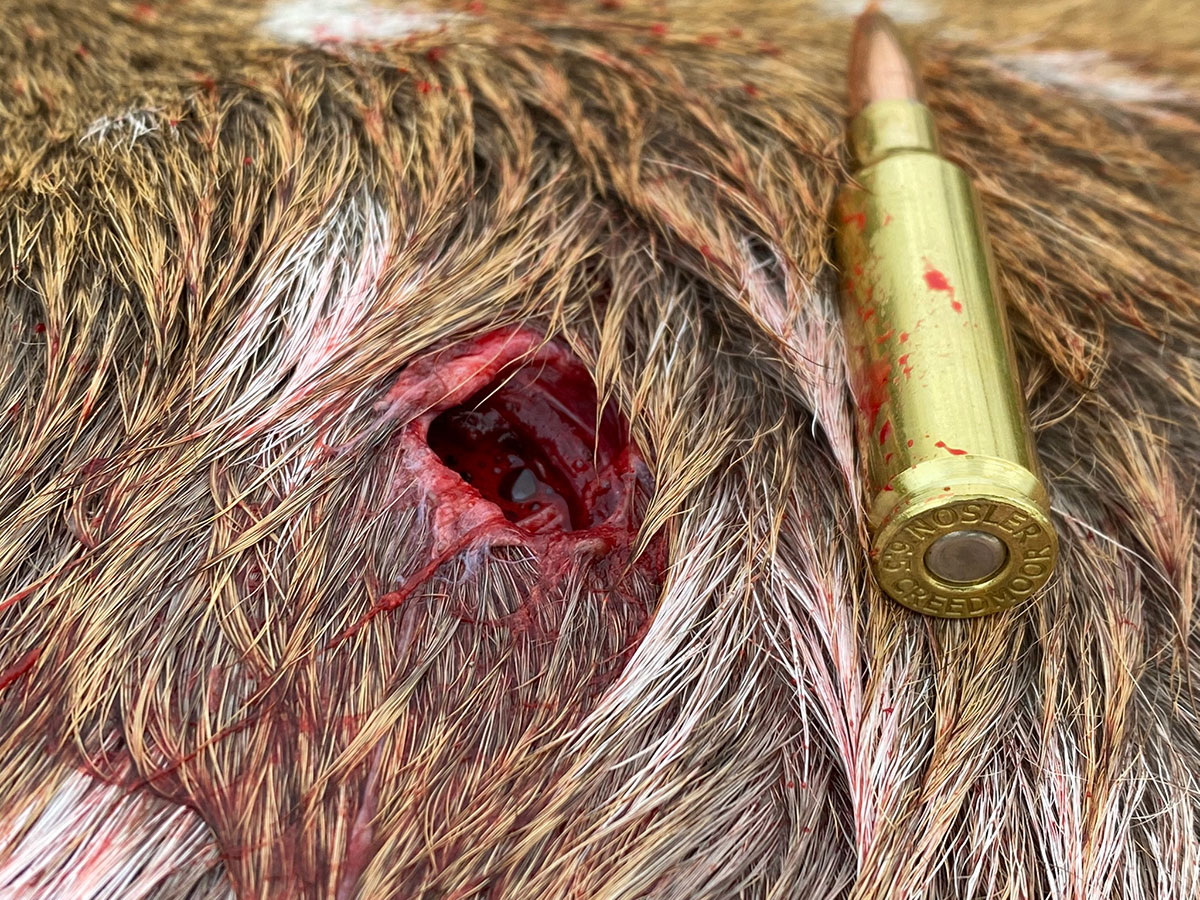
Pick the right game trail
The truck’s headlights followed the red dirt trail through the large pasture, winding our way to a depression where the vehicle would stay concealed. The morning air felt good but was anything but cool. We walked about 400 yards to a big tree where dead limbs had been piled around the base to make a natural-looking blind. We settled in and waited for deer to start returning on the game trails. The escarpment was to our left and would be the destination for deer heading back to cover. They had no trouble navigating steep, rocky terrain; the only question was what trail the deer would use and where they would try to crest the escarpment.
As the shroud of darkness started to lift, the ground came alive with deer. To say axis deer are spooky is an understatement. They use their eyes, ears, and nose to stay on a constant vigil. We had about 20 deer work a trail to our east, and one of them spotted the truck’s roof, which turned the entire herd into a stampeding retreat. We saw other deer cut across before us, heading towards the creek and the escarpment. We continually glassed the steep hillside and saw herds of deer moving in long lines.
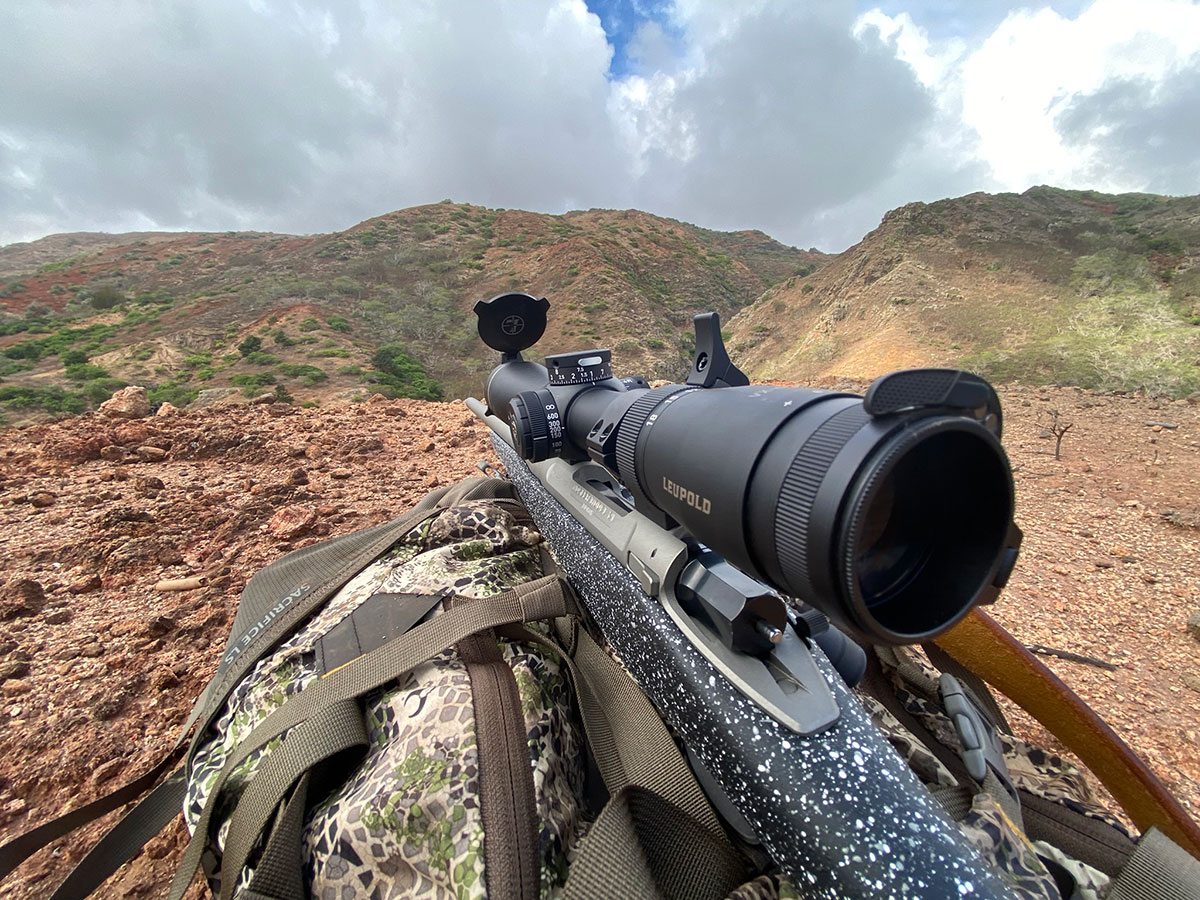
A buck worked its way up from the bottom, and it only took seconds to decide it was worth going after. We left the blind and scurried towards the creek while staying in the sparse cover until we reached a big rock. The buck was about 280 yards away, and I turned the CDS elevation dial on my riflescope for a direct hold. The buck was looking toward us and trying to navigate the trails between cliffs. I settled the crosshair on the buck and followed it until it stopped to offer a shot. The Nosler 21 rifle in 6.5 Creedmoor barked, and the deer stumbled briefly and fell over a massive rock, landing on a ledge. I was fortunate to have Justin Moore, PR master for Nosler and Kryptek, with me to take photos and capture the events.
We broke the deer down where it fell and packed it out in game bags. We processed the deer harvested during the week, and everyone had a cooler of delicious venison to take home. Backstraps were missing from a few of the axis and used for lunches cooked on the Camp Chef stove at our staging area. Every meal encouraged us to put our boots to the test in the punishing lava rocks.
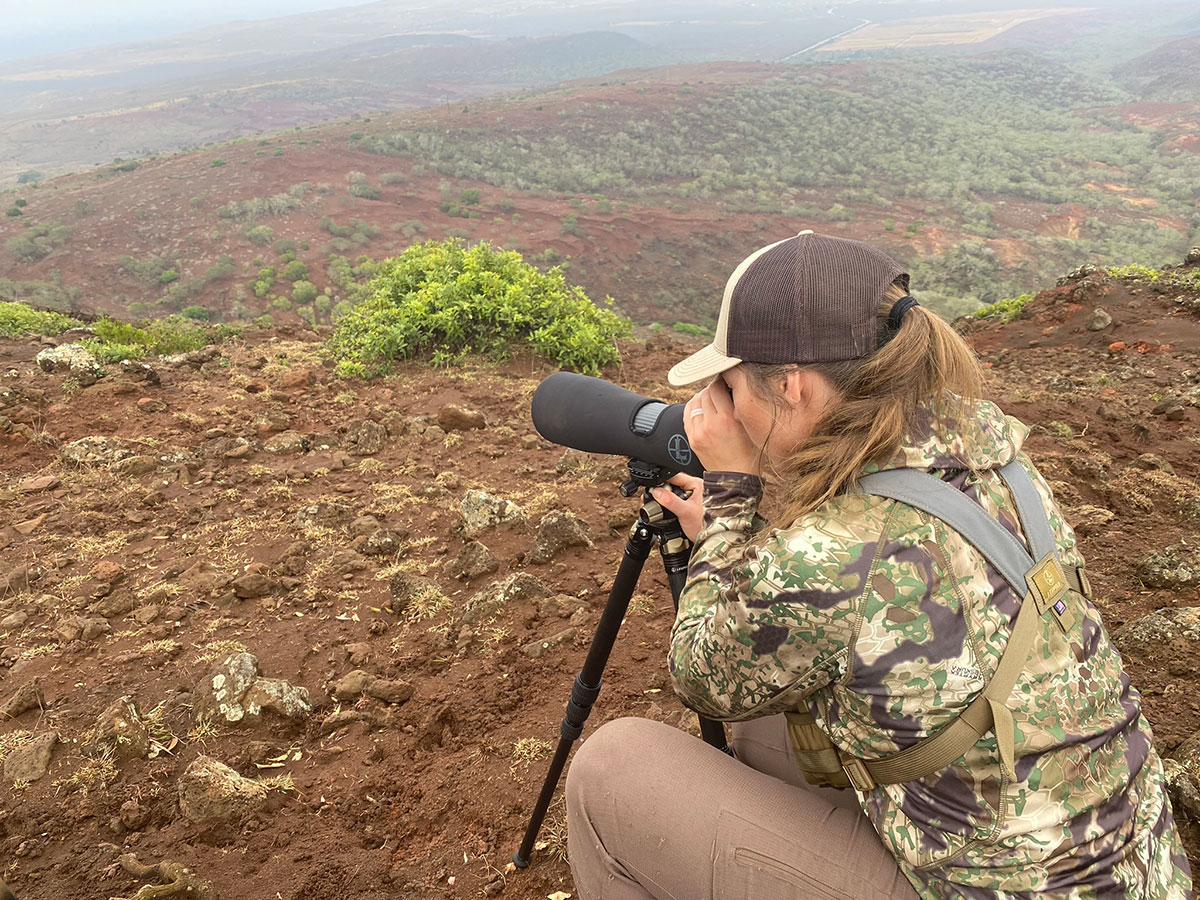
Using a hot Camp Chef griddle, we formed quarter-pound balls of ground axis and smashed them with spatulas until they were ⅓ of an inch thick. The smash burgers were seasoned with salt and pepper and flipped once. A bun with all the fixings topped things off for a great meal before one of our guides chopped the ends of fresh coconuts for refreshments.
The next day, we grilled axis backstrap and glazed it with guava jelly cooked down with butter. The meals were an amazing treat that helped us focus on hunting hard for the entire trip. There are different hunting packages, but our group opted to harvest two does and one buck, providing plenty of fresh protein to take home.

Travel tips
Order a large cooler on Amazon and have it delivered to your outfitter. It will be ready to stock with meat and fly home with you. There are several courier options for getting meat back to North America that are economical and have guaranteed delivery. It can be more economical to send a cooler than to pay extra baggage and overweight fees.
Before returning home, check your airline for discounted first-class upgrades, often allowing more luggage and weight. The cost of an upgrade can be more economical than extra fees.
Do not take sunscreen to Hawaii unless you know which ones are banned and why. There are restrictions to protect aquatic ecosystems and marine environments, especially coral reefs. Sunscreens that contain oxybenzone and octinoxate are not allowed and are strictly screened. All chemical sunscreens are not allowed; the only other option is mineral sunscreens that you can get anywhere on the islands, from pharmacies to grocery chains.
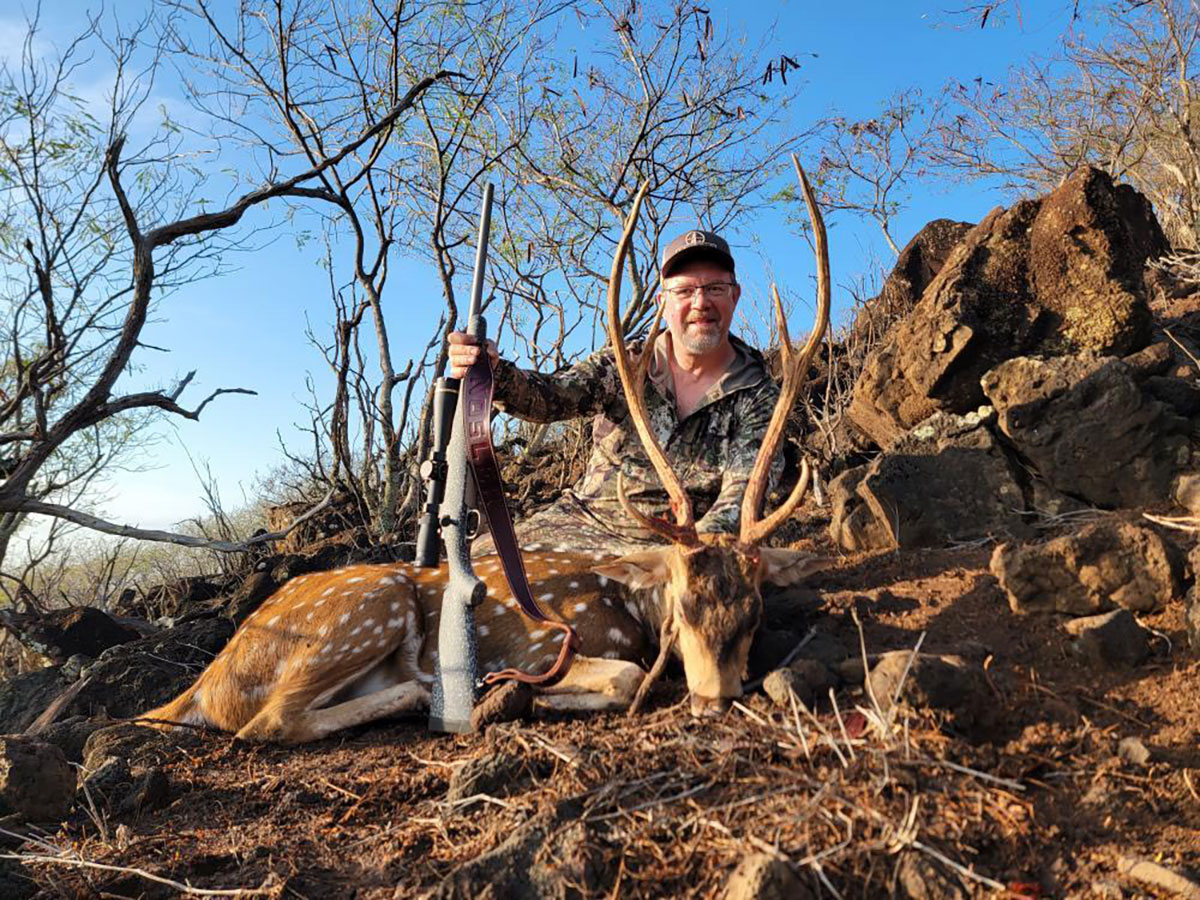
Leupold Angled Spotting Scope
The SX-4 Pro Guide 20-60x85mm was ideal for picking apart rocks and judging hundreds of sets of antlers. The magnification range and HD performance were a requirement to deal with challenging distances, bright sun, and peak movement in low-light conditions. The spotting scopes were matched up with the Pro Guide CF-436 Tripod Kit. The Carbon Fiber Tripod delivers the versatility and performance required on the range and in rocky, steep terrain. It proved rugged, lightweight and has a maximum height of 67 inches. We also carried the Tripod Shooting Saddle, an ultra-light, tripod-mounted rifle rest used on the tripod for stability.

Leupold VX-6HD Riflescope
The VX-6HD has adjustable elevation and windage turrets that allow you to zero a rifle at 100 yards. Dial the Custom Dial System ZeroLock 2 (CDS-ZL2) turret to a specific range to compensate for elevation and windage.
The turret dials two complete rotations, and the lock button sinks in to show when you are on the second turn. VX-6HD scopes come with illuminated reticles with one-button intensity adjustment. The scope is clear to the edges, and once you focus the unit for your eye, it is difficult not to notice the clarity. High Definition is a measure of image resolution rather than a type of glass. The evolution of these optics has led to higher light transmission and crisper resolution. Leupold uses a 6 X erector system, or 6:1 zoom ratio, for strength and to help with clarity. The lenses are waterproof and fogproof, have special coatings for increased clarity and light gathering, shed dirt and water, and prevent fingerprints and scratches. There are six models with different magnifications and objective lenses. For more information, visit their website.
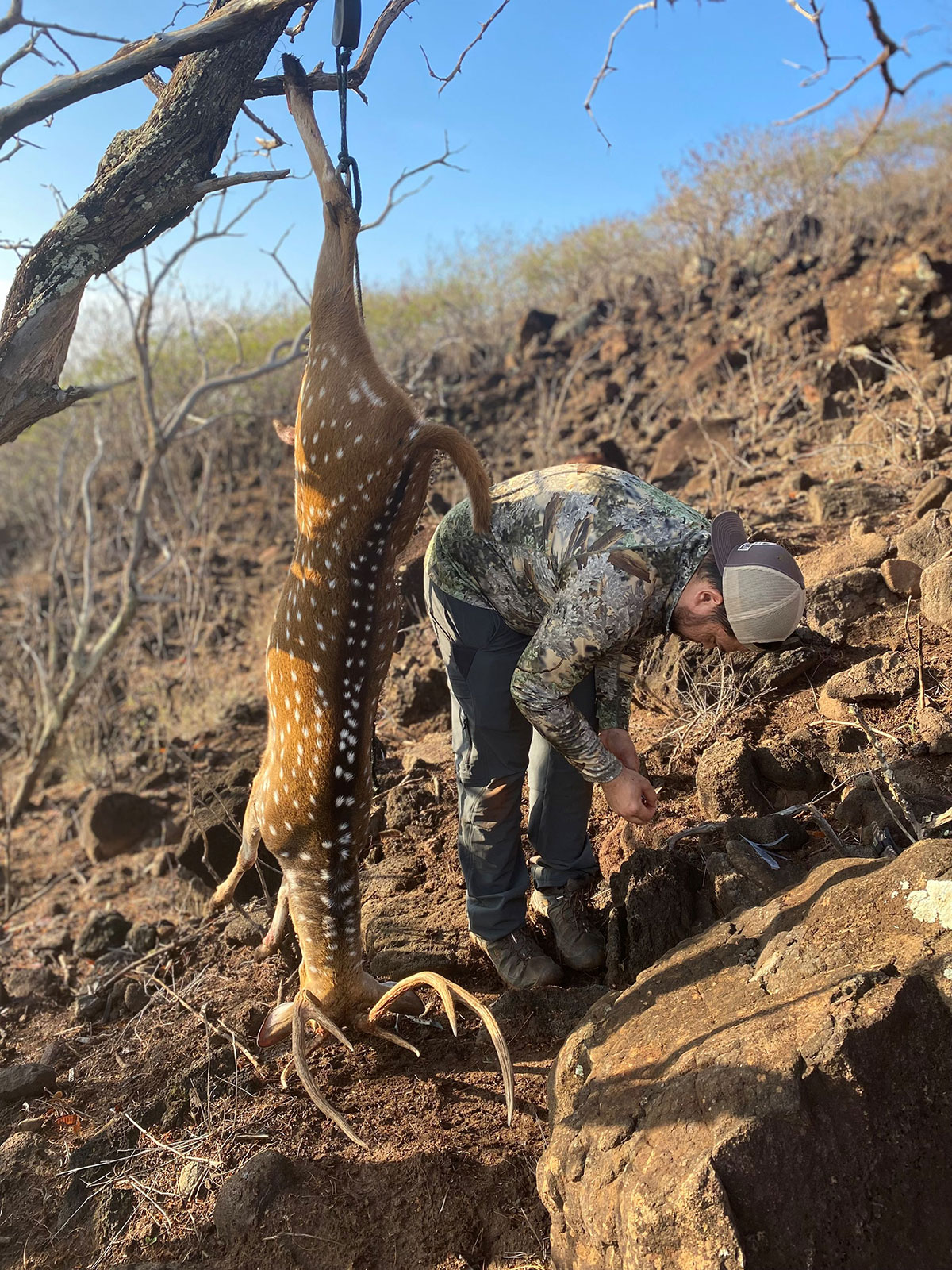
Go Hawaii Outfitters
Koa Manaba, a Molokai native and lifelong hunter, operates Go Hawaii Outfitters to allow hunters to hunt several game species. The axis deer provide an exceptional hunt and table fare to share back home. For hunt information, visit their web site.
Kryptek Camo
Kryptek has some great fishing and warm-weather hunting stuff. We used pants and shirts designed to keep us cool in the tropical heat, and they worked. Check out Kryptek Camo Clothing for options to stay concealed and comfortable in any weather conditions..
Camp Chef
Camp Chef Pro 14 stove, grill box, and griddle were ideal for cooking axis deer backstraps and smash burgers. Lightweight, portable, and a cook-anywhere design makes the unit a perfect portable hunting stove with many accessories.
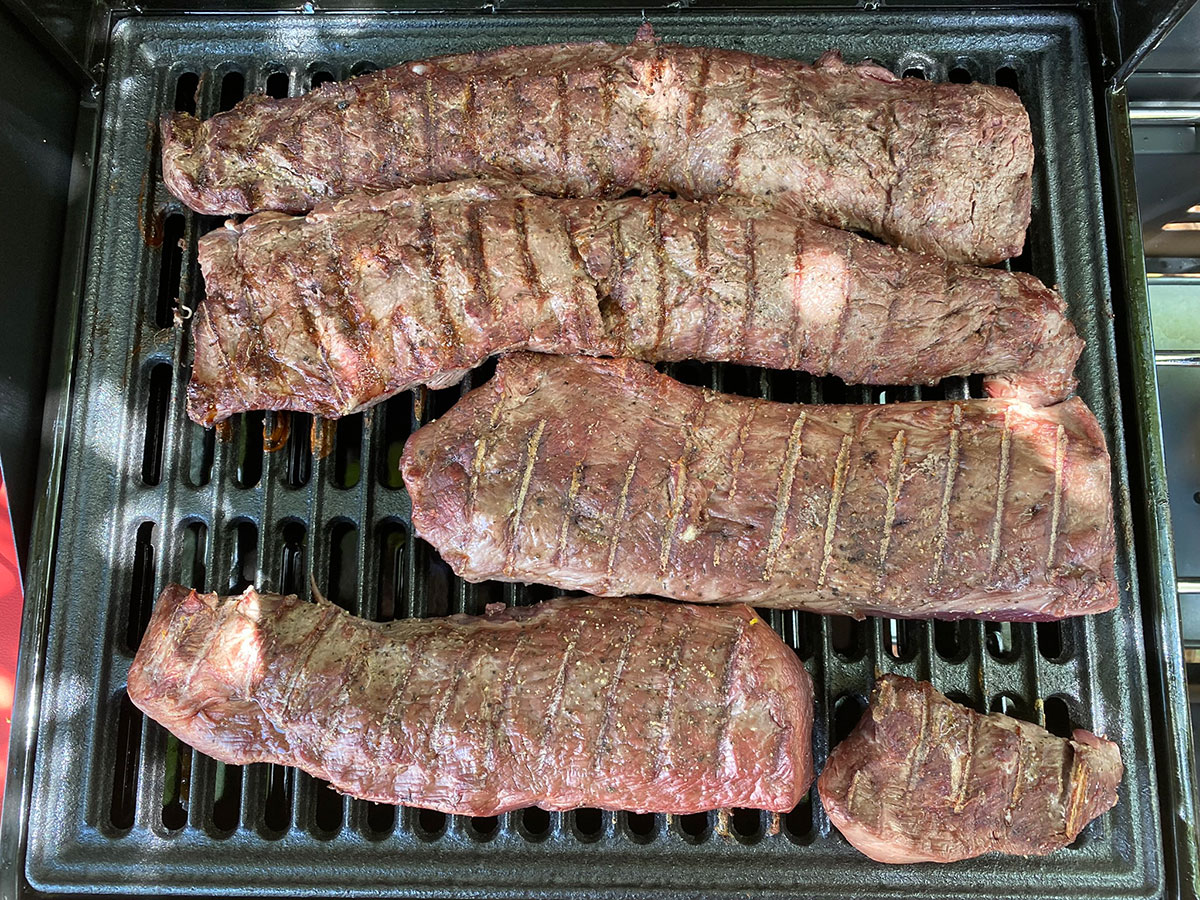
LaCrosse Lodestar Boots
LaCrosse Lodestar boots were a must for the hunt, holding up to the rough, pumice-like lava rock, never-ending dust, and myriad of thorns. Lightweight, durable, and breathable were all important considerations for the terrain and weather conditions.
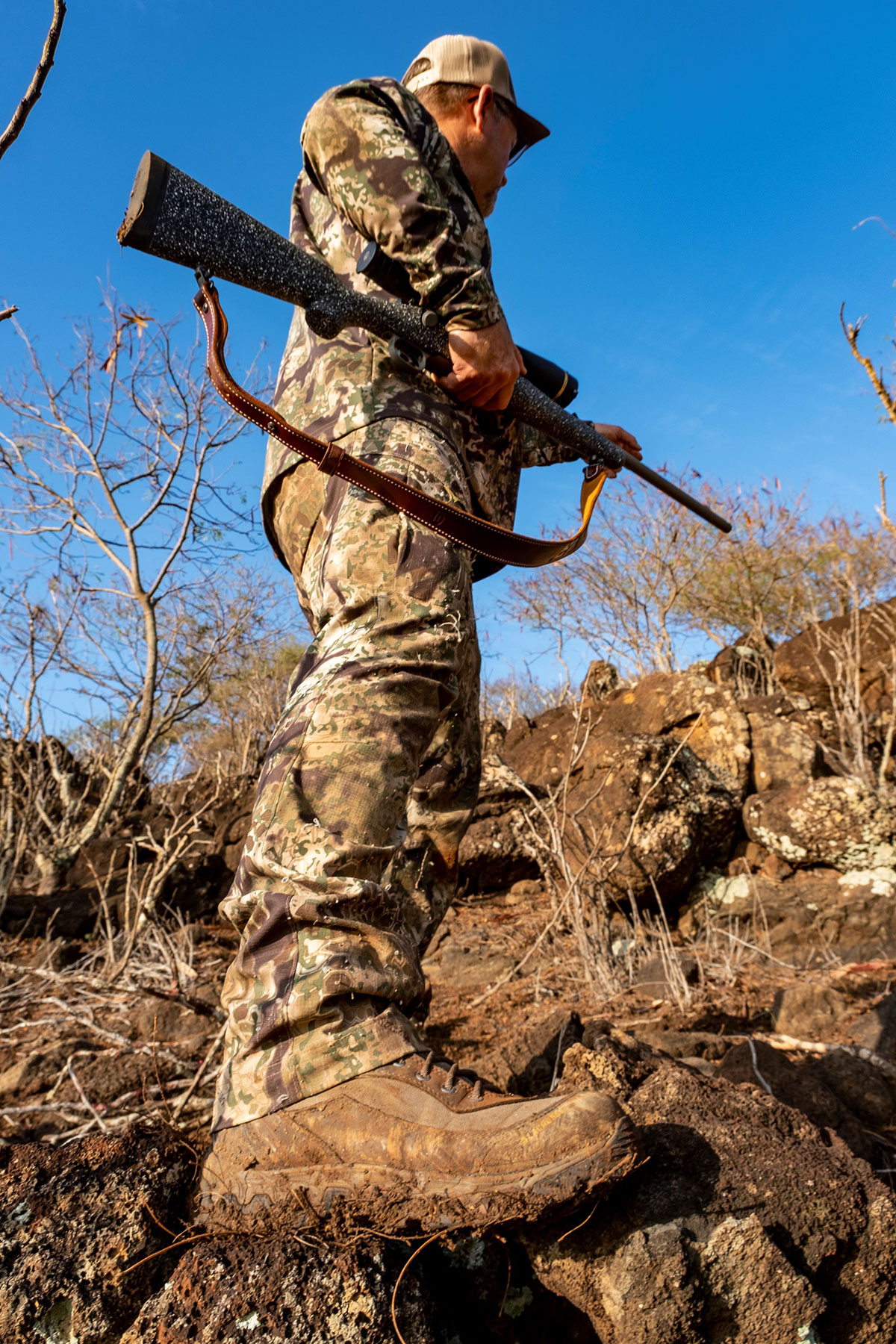
Nosler 21 Rifle
The Nosler 21 rifle in 6.5 Creedmoor reminded me of a custom rifle with lots of attention to detail. The firearms shot minute-of-angle groups to extreme distances and proved deadly with the Nosler 140-grain BT cartridge. www.nosler.com

Per our affiliate disclosure, we may earn revenue from the products available on this page. To learn more about how we test gear, click here.



